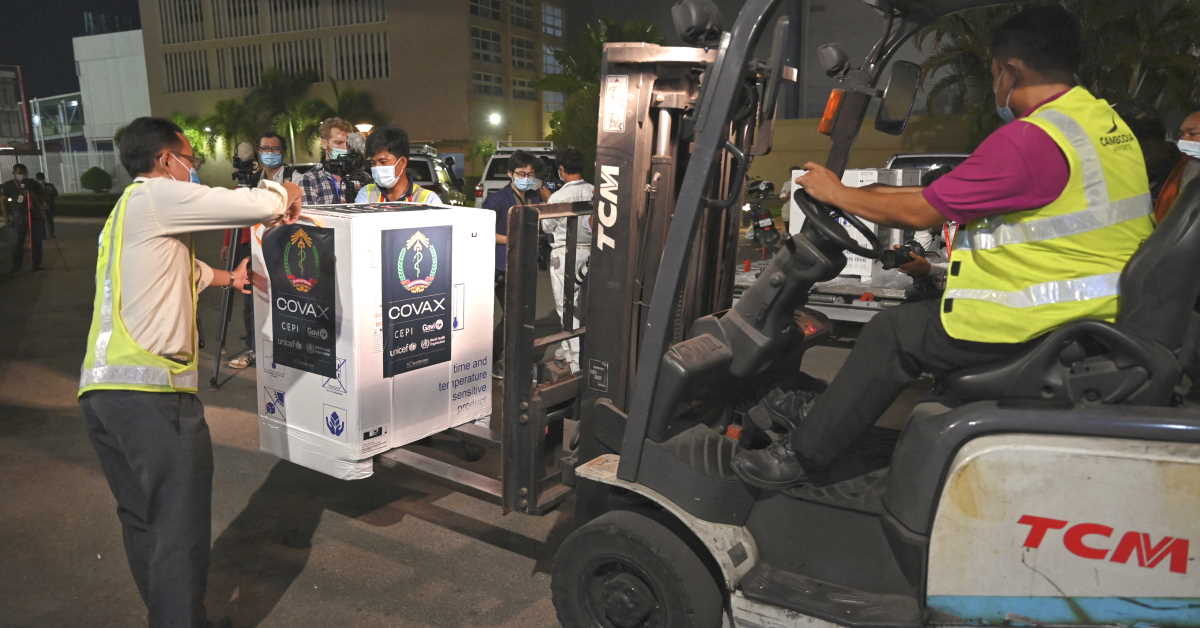The World Health Organization (WHO) on Monday called for COVID-19 vaccine manufacturers to give COVAX first refusal on new doses, or commit half of their volumes to the global jab equity scheme.
WHO Director-General Tedros Adhanom Ghebreyesus said manufacturers should turn their attention to the COVAX facility, which has struggled to get donation-funded doses to poorer countries.
Tedros voiced his frustration that several poor countries have been unable to immunise their health workers, the elderly and other populations most vulnerable to severe COVID-19 disease.
Some rich countries meanwhile, having bought up vaccine supply, are drawing up preparations to start vaccinating children, he said.
Tedros has called for a massive global effort to vaccinate at least 10 percent of the population of all countries by September, and at least 30 percent by the end of the year.
That will require an additional 250 million doses by September, with 100 million doses in June and July alone.
"This weekend, the G7 leaders will meet for their annual summit," Tedros told journalists. "These seven nations have the power to meet these targets.
"I am calling on the G7 not just to commit to sharing doses, but to commit to sharing them in June and July," he said.
"I also call on all manufacturers to give COVAX first right of refusal on new volume of COVID-19 vaccines, or to commit 50 percent of their volumes to COVAX this year."
Manufacturers In The Spotlight
COVAX was set up to ensure equitable distribution of vaccines, particularly to low-income countries, and has already delivered more than 80 million doses to 129 territories.
But that is about 200 million doses behind where it had hoped to be, says the WHO.
For vaccines to be eligible for COVAX, they need to have been approved by the WHO and given its emergency use listing status.
So far, the United Nations (UN) health agency has given the green light to vaccines created by AstraZeneca, Johnson & Johnson, Moderna, Pfizer/BioNTech, Sinopharm and Sinovac.
A handful of others have started the validation process.
COVAX is co-led by the WHO, Gavi and the Coalition for Epidemic Preparedness Innovations.
It intends to procure enough vaccines for 30 percent of the population in 91 of the poorest participating territories – 20 percent in India – with donors covering the cost.
But COVAX has been hit by inequalities in the global vaccine roll-out, and also delivery delays.
AstraZeneca shots make up 97 percent of doses supplied so far, while the rest come from Pfizer/BioNTech.
Two-Track Pandemic
Although the number of new COVID-19 cases reported to WHO has declined for six consecutive weeks, and deaths for five weeks, the global picture is mixed, said Tedros.
"Increasingly, we see a two-track pandemic: many countries still face an extremely dangerous situation, while some of those with the highest vaccination rates are starting to talk about ending restrictions," he said.
More than 2.15 billion doses of COVID-19 vaccines have been injected in at least 215 territories around the world, according to an AFP count.
But just 0.3 percent have been administered in the 29 lowest-income countries, home to nine percent of the world's people.
"The inequitable distribution of vaccines has allowed the virus to continue spreading, increasing the chances of a variant emerging that renders vaccines less effective," said Tedros.
"Inequitable vaccination is a threat to all nations, not just those with the fewest vaccines." – AFP
